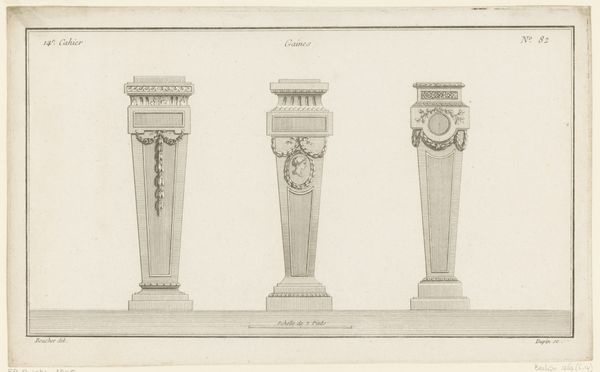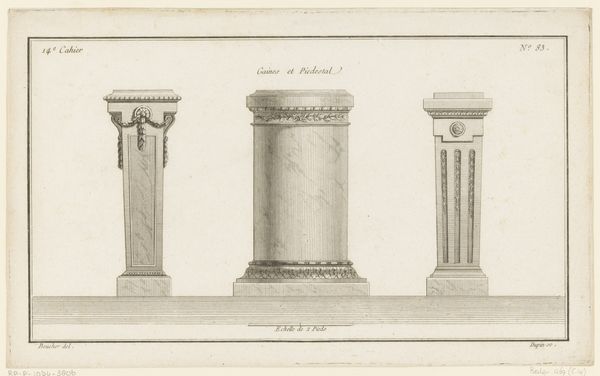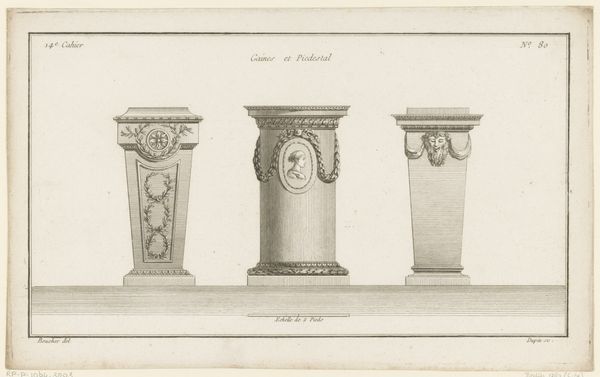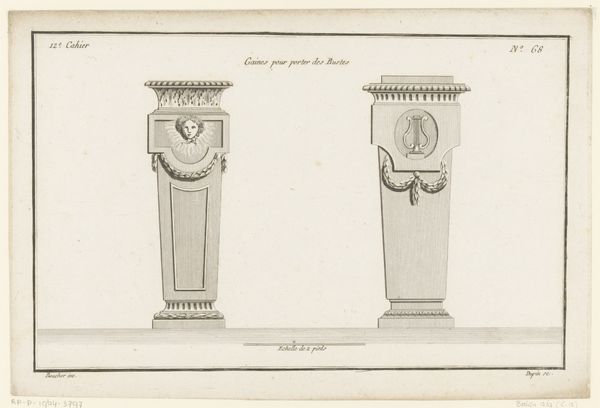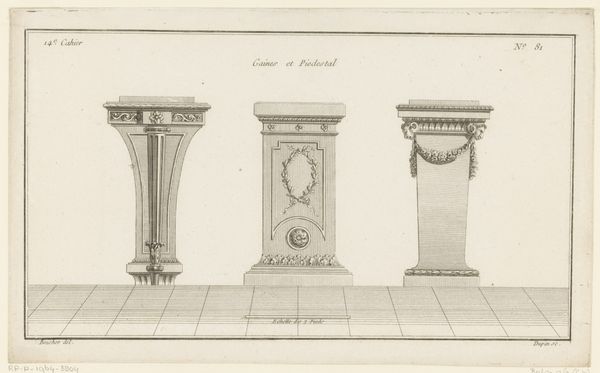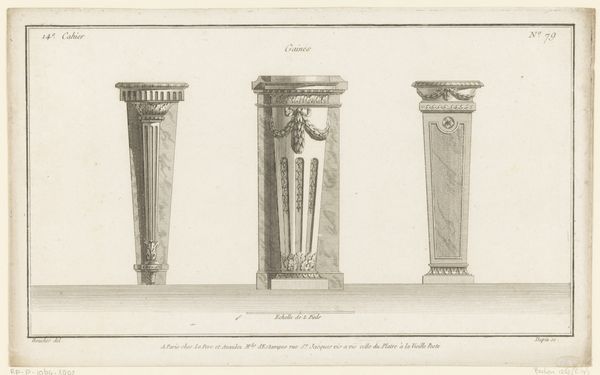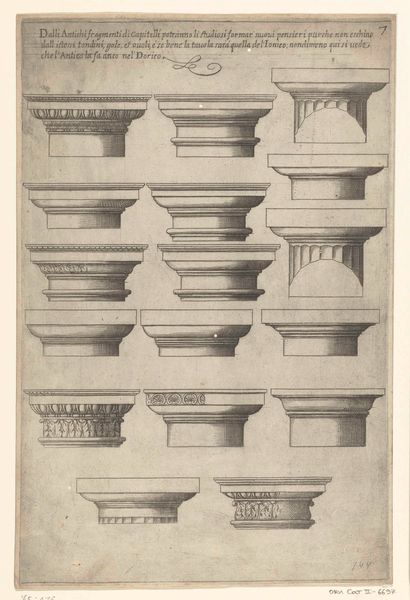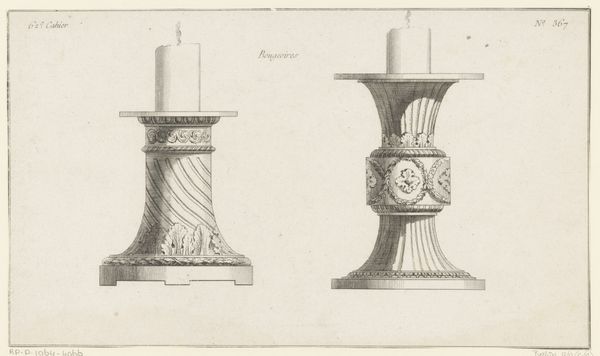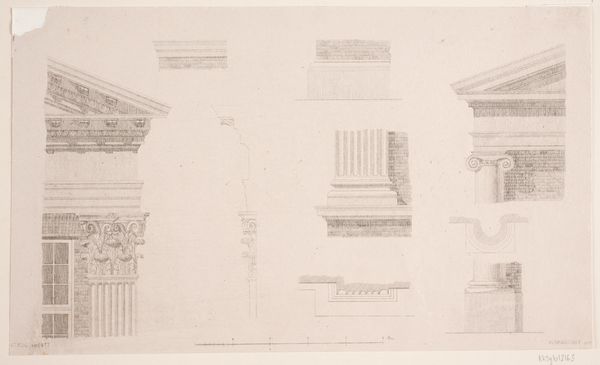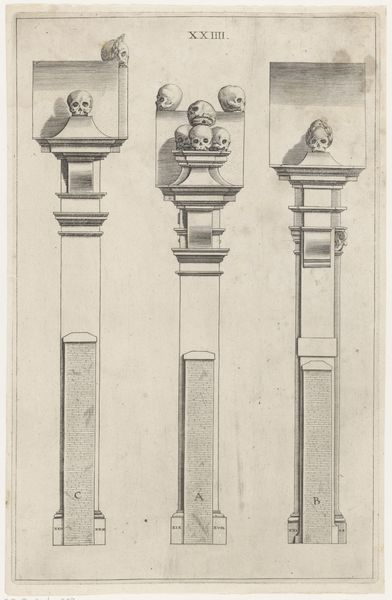
drawing, paper, pen, architecture
#
drawing
#
neoclacissism
#
paper
#
form
#
geometric
#
line
#
pen
#
academic-art
#
architecture
Dimensions: height 201 mm, width 328 mm
Copyright: Rijks Museum: Open Domain
Curator: Immediately, they strike me as these somewhat austere, lonely sentinels. All in a row. A very eighteenth-century concept of idealized support and elegance. Editor: And indeed they are. What you're responding to aligns with the period's deep fascination with classical forms. What we have here is “Three Pedestals with Garlands and Mask,” a drawing by Nicolas Dupin, dating from around 1772 to 1779. It showcases, in meticulous detail, design ideas for Neoclassical pedestals. Curator: Meticulous is definitely the word. Look at the linework! It’s incredibly precise. Almost mathematical. They look like architectural plans. Editor: That precision is core to the Neoclassical style—emphasizing order, rationality, and a clear revival of classical Greek and Roman motifs. Consider that this movement directly countered the Rococo, which, prior to it, reveled in asymmetry, ornamentation, and this very sensual playfulness. Curator: I suppose so. There's very little to touch with Rococo aesthetics. Each pedestal in this composition features a different design. One features what looks like an Apollonian mask. Editor: Exactly, it brings the artwork into dialogue with historical and social constructs by engaging directly with visual art. But in thinking more carefully of gender constructs, doesn't the austerity serve to reject feminine aesthetic values, a shift mirrored throughout Western society during this period? The line and academic-art styles, are indeed evocative. Curator: Well, that just blew my mind in the best possible way. Looking closer, they’re all unique but somehow… constrained? And although their purpose would be to showcase things –statues, busts, anything – there is something deeply suppressive, controlled… Maybe what is meant to empower, instead imprisons! What could these tell of a modern identity, for all intents and purposes defined by constant display. Editor: What began as architectural drawings reveal how design and societal values intersect. Seeing the artwork like this makes us think that our own subjective experiences are impacted from the weight of structures and representations we can challenge and redefine. Curator: In many senses, viewing through this artwork is actually about becoming more liberated by taking stock from within ourselves... very useful food for thought. Thank you.
Comments
No comments
Be the first to comment and join the conversation on the ultimate creative platform.
